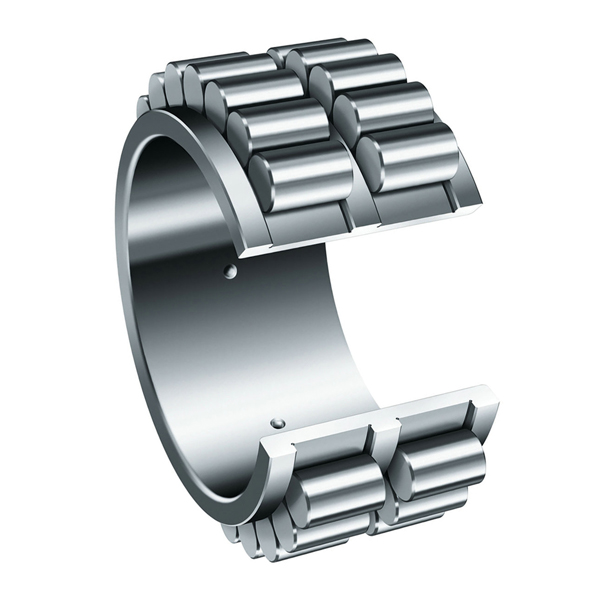
Due to their design, these bearings can withstand heavy radial loads, axial loads in both directions and are highly rigid. Double row tapered roller bearings are commonly used in gearboxes, lifting equipment, rolling mills and mining machinery such as tunnel boring machines.
Due to their second row of rollers, double row tapered roller bearings are suitable for larger radial and axial loads. The axial load capacity of tapered roller bearings increases with increasing contact angle α. The size of the contact angle is usually between 10° and 30°. The size of the angle is related to the calculation coefficient e: the larger the value of e, the larger the contact angle.
Tapered roller bearings position the shaft in both directions with a specific axial clearance or preload.
Double row tapered roller bearings provide a rigid bearing arrangement.
The optimized roller design on the ribs and the surface finish of the ribs promote the formation of a lubricant film, thereby reducing friction. This also reduces frictional heat and flange wear. In addition, the bearings maintain preload better and reduce noise levels during operation.
Basic Bearing Design Bearings and Convex Raceways Logarithmic raceway shapes optimize load distribution along the contact surface, reduce stress peaks at the roller ends, and reduce sensitivity to misalignment and shaft deflection with conventional straight lines.
Optimized surface treatment of the roller and raceway contact surfaces facilitates the formation of a hydrodynamic lubricant film.
The manufacturing tolerances and dimensional accuracy of the rollers integrated in double-row tapered roller bearings are so precise that they are almost identical. This provides optimal load distribution to reduce noise and vibration levels and enables more precise preloading.
